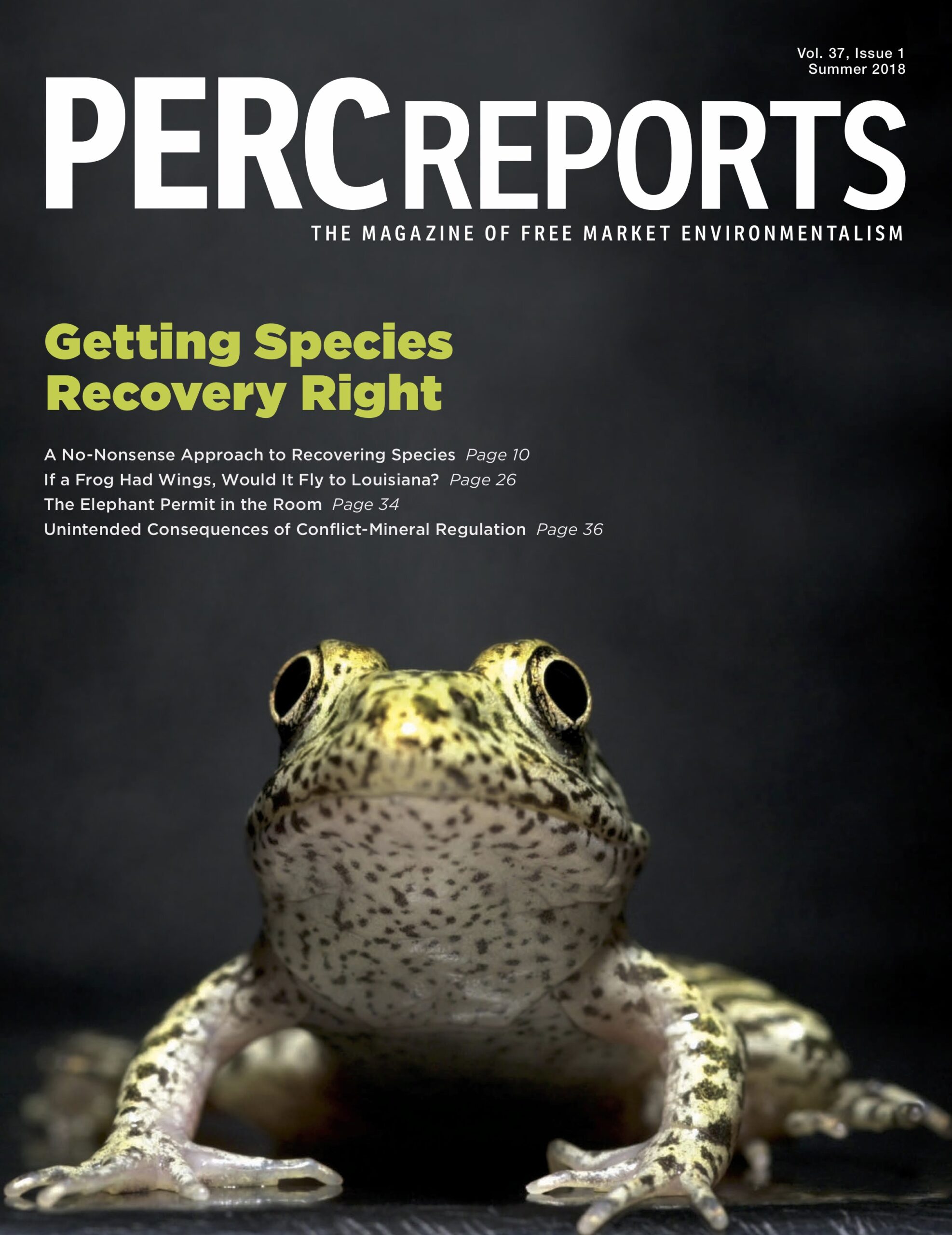
PERC Reports: Summer 2018
The challenges of species recovery and how to provide incentives that can overcome those challenges.
Read more

The challenges of species recovery and how to provide incentives that can overcome those challenges.
Read more


Calls for more or "better" science will not address the Endangered Species Act's underlying problems.
Read more
How private investment can restore forests and reduce wildfire risk.
Read more
Arbitrary decisions about trophy imports undermine conservation efforts and economic opportunity.
Read more
New research on the unintended consequences of conflict-mineral regulation.
Read more

How Colorado took endangered species recovery into its own hands.
Read more